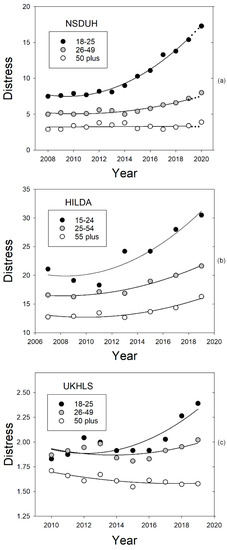2023-03-23 ワシントン大学セントルイス校
◆ワシントン大学の心理学と脳科学の教授であるSandra Hale氏は、「パンデミックが若者や若い人々にとってどのように壊滅的な心理的影響を与えたかを探る最近の研究がたくさんありますが、これらの研究は年齢差に基づく重大な負の結果のリスクと逆に、なぜ高齢者の苦悩レベルが安定しているかという問題を無視する傾向があります」と述べています。彼女は、「私たちの研究は、成人の苦悩レベルがパンデミック中にどの程度変化したかが年齢と逆相関していたことを示唆しており、SARS-CoV-2ウイルス感染による重大な負の結果のリスクに基づく年齢差に反しています」と述べています。
◆この研究は、パンデミックが世界中の若者の精神的健康問題の増加に寄与する多くの要因の1つであることをさらに示しています。また、私たちがストレス要因(例えばパンデミック)に対処する能力は、個人的な人格や感情的特性に大きく依存し、年齢と共に変化することを示唆しています。
<関連情報>
- https://source.wustl.edu/2023/03/study-older-adults-were-better-equipped-to-deal-with-pandemic-related-distress/
- https://www.mdpi.com/1660-4601/20/4/3549
ディストレスシグナル: COVID-19パンデミック前およびパンデミック中の心理的苦痛における年齢差 Distress Signals: Age Differences in Psychological Distress before and during the COVID-19 Pandemic
Sandra Hale,Joel Myerson,Michael J Strube,Leonard Green and Amy B. Lewandowski
International Journal of Environmental Research and Public Health Published: 17 February
DOI:https://doi.org/10.3390/ijerph20043549

Abstract
Psychological distress reached historically high levels in 2020, but why, and why were there pronounced age differences? We address these questions using a relatively novel, multipronged approach, part narrative review and part new data analyses. We first updated previous analyses of national surveys that showed distress was increasing in the US and Australia through 2017 and then re-analyzed data from the UK, comparing periods with and without lockdowns. We also analyzed the effects of age and personality on distress in the US during the pandemic. Results showed distress levels and age differences in distress were still increasing through 2019 in the US, UK, and Australia. The effects of lockdowns in 2020 revealed the roles of social deprivation and fear of infection. Finally, age-related differences in emotional stability accounted for the observed age differences in distress. These findings reveal the limitations of analyses comparing pre-pandemic and pandemic periods without accounting for ongoing trends. They also suggest that differences in personality traits such as emotional stability modulate responses to stressors. This could explain age and individual differences in both increases and decreases in distress in response to changes in the level of stressors such as those occurring prior to and during the COVID-19 pandemic.

